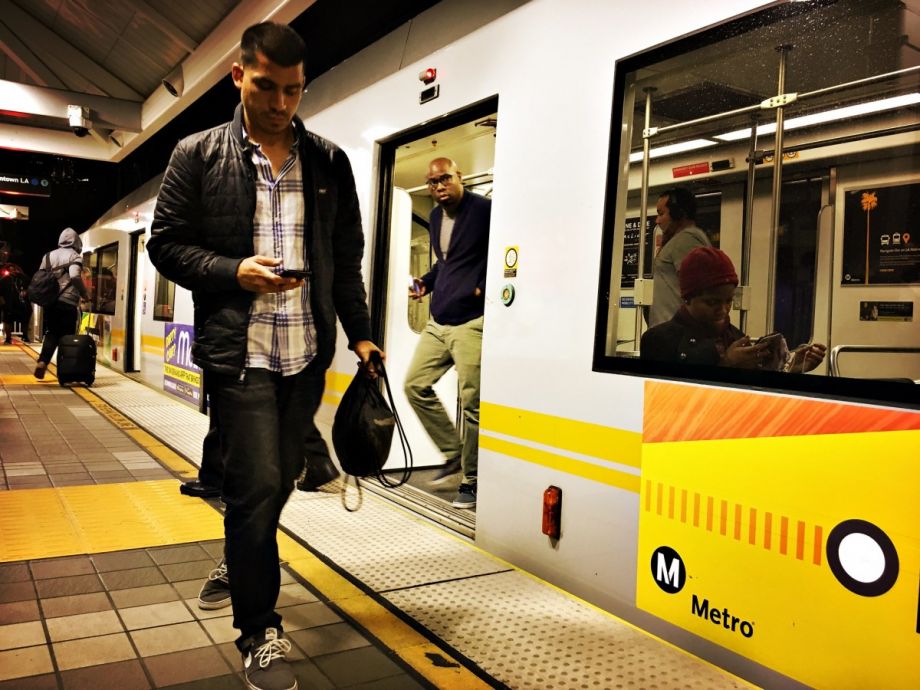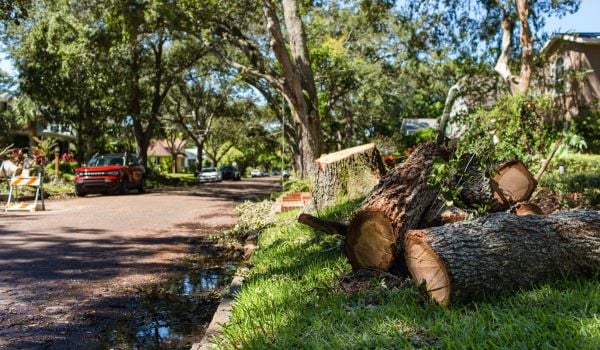Southern California experiences roughly 30 earthquakes every day. Most of them are never felt, but those that are can cause major damage to both systems and people. To better protect its riders and infrastructure, the Los Angeles County Metropolitan Transportation Authority (L.A. Metro) along with private company Early Warning Labs is installing “ShakeAlert” early warning technology in all bus and rail facilities.
L.A. previously debuted ShakeAlertLA, a smartphone app that alerts users about a detected earthquake in their area seconds before it occurs. Those few seconds are long enough to prepare oneself for shaking and quickly move away from large furniture and other objects that can fall. The app had over 1 million downloads before it was replaced with a statewide MyShake app in 2020.
The ShakeAlert technology will now be deployed at the county’s bus and train maintenance centers and facilities, and warn employees, drivers, and patrons about oncoming shaking. The early warning system detects earthquakes of magnitude 4.8 or greater. And once ShakeAlert is deployed, it’ll be the largest deployment of any U.S. transit agency.
“Being able to add this system at our bus and rail facilities enables us to enhance the resiliency of the system and keep our services running for the public,” says Aldon Bordenave, senior director of emergency services and homeland security emergency management for L.A. Metro.
The U.S. Geological Survey (USGS), which operates the ShakeAlert early warning system has deployed versions of the technology across the West Coast in Washington and Oregon, along with California. The technology relies on its seismic stations that detect ground motion. Once motion is detected, the information is quickly sent to one of three processing centers on the West Coast. A ShakeAlert Message is then generated, containing estimates of the earthquake’s location, size, magnitude, and shaking distribution which is sent to a USGS distribution center, like Early Warning Labs. Through its partnership, Early Warning Labs then sends these messages to L.A. Metro which the agency can use to protect its patrons, staff, and infrastructure from earthquake damage.
“Early warning can provide systems and people with the opportunity to mitigate damage to a power system in seconds, shut down equipment, put critical infrastructure in safe mode, and for individuals, can give people information to take protective action, can ask operators to slow a train down, and can tell patrons to brace themselves for shaking,” says Robert Michael de Groot, chair of the USGS ShakeAlert joint committee for communication, education, outreach, and technical engagement.
In San Francisco, the city partnered with USGS to install the ShakeAlert technology on its Bay Area Rapid Transit (BART) services, the main transit system in the Bay Area. There, the early warning system alerts relevant agencies and triggers automatic responses like slowing down BART trains when an earthquake is detected nearby. BART renewed its contract with USGS at the end of 2020.
L.A. started as a beta tester for the system in 2007, and in 2016, started piloting the technology on its rail operations with Early Warning Labs. “The idea was to see how we can integrate [USGS’s technology] to enhance the protection of our passengers and our systems,” says Bordenave.
The expansion of ShakeAlert was just in time for the Great ShakeOut Day, which happens every year on the third Thursday of October. On October 21, cities across the world tested their earthquake early warning systems. In California, there were over 7.6 million registered participants, including L.A. Metro. The city tested ShakeAlert in its rail facilities, sending alerts with the warning “earthquake, earthquake, earthquake, shaking expected,” prompting employees and passengers to perform earthquake procedures as if it were a real quake such as bracing yourself and protecting one’s head and neck. “On the California Great ShakeOut, we are able to let our passengers know that hey, this is something that [L.A. Metro] is moving forward with because we want to strengthen the protection of our patrons,” says Bordenave.
L.A. County is home to more than 10 million people. And roughly 1.2 million rely on L.A. county’s bus and rail line systems every day, prior to the pandemic. Transportation is a community good. And the transit system is a community lifeline for many individuals in the region, says Bordenave. “There is a need for creative solutions to keep people safe and protect our critical infrastructure like transportation,” he adds.
ShakeAlert is one of many ways cities should prepare their citizens and infrastructure for earthquakes, says de Groot. “[ShakeAlert] is not going to solve all our problems. But it is one tool in our risk reduction toolbox is to reduce earthquake risk.”
For example, “if you know your building is going to collapse during an earthquake and you’re inside your building, ShakeAlert is not going to solve the problem inherently, but it’s part of the solution,” says de Groot. “We didn’t develop ShakeAlert to replace something else, but to complement what we already have.” Creating more resilient transportation systems and buildings is still essential to minimizing earthquake damage.
Additionally, ShakeAlert can only detect earthquakes up to magnitude 8, de Groot adds. Creating algorithms for bigger earthquakes is much harder, but USGS is in the process of improving its algorithms for bigger and more dangerous earthquakes.
Currently, ShakeAlert is being installed in L.A.’s rail facilities with plans to begin the next phase of the installation in its bus facilities this upcoming year. The final phase will involve using highway signs to notify drivers of upcoming earthquakes, giving them time to slow down and pull over. L.A. Metro is aiming to have this final phase completed prior to the 2028 Olympics.

Mia Jackson is a master's student at the Bartlett School of Architecture, University College London. Her writing about cities, health and innovation has appeared in Newsweek, The Daily Beast, The Virginian-Pilot and elsewhere.




_920_518_600_350_80_s_c1.jpg)











